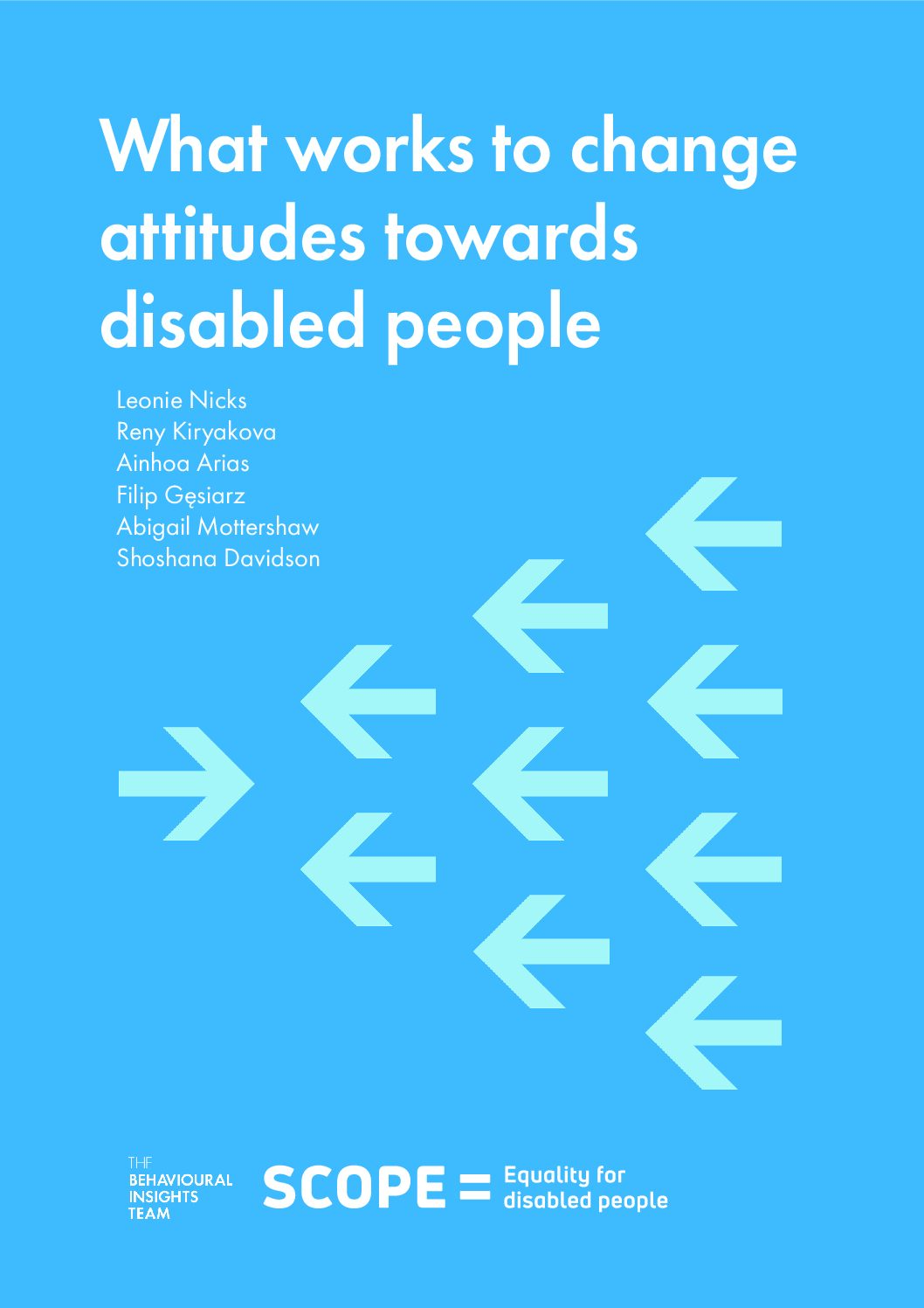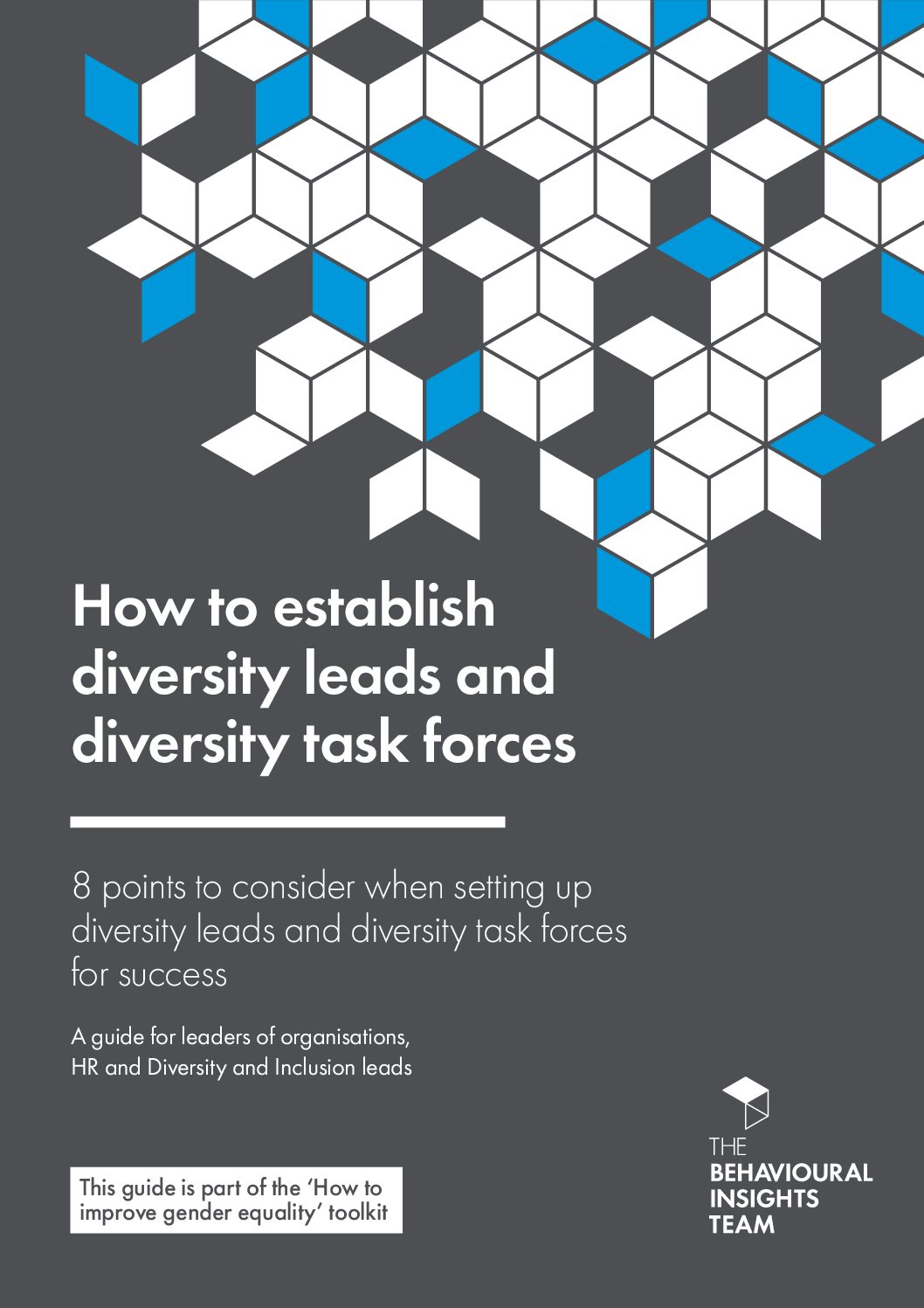Executive Summary
Negative attitudes towards disabled people are common., Despite this, there is very little evidence on what works and what does not work to reduce negative attitudes towards disabled people.
Scope partnered with the Behavioural Insights Team (BIT) to run an online experiment. BIT ran a randomised controlled trial (RCT) to test whether different messages influence attitudes towards disabled people among the general public (n=5,498).
Recommendations for future mass media campaigns
Based on the insights from the study, we recommend the following principles for designing media campaigns.
- Affirm the status of disabled people. Positive representations of disabled people that foster respect and preserve dignity may help to avoid pity, even if coupled with examples of unfair treatment or other negative experiences.
- Share stories and personal experiences. Personal stories that centre a named individual are easier for audiences to connect with than generic stories or faceless statistics.
- Encourage people to think about how they would feel facing inequality. Increase the impact of a personal story by encouraging the audience to imagine a disabled person’s perspective in terms of a universal emotion or experience, e.g. unfair treatment. This may result in ‘self-persuasion’. Avoid asking non-disabled people to imagine being disabled.
Take care when:
- Talking about injustice. Highlighting injustice in a way that positions disabled people as vulnerable may reinforce negative stereotypes and lead to audience avoidance.
- Using facts and figures. Without emotional engagement, facts and figures may alienate audiences.
What we tested
The messages we tested were based on existing evidence and common messages used in campaigns. BIT co-designed these messages in workshops with Scope staff and disabled people.
The seven messages were tested against seeing no message at all:
- Things in common: the message emphasised everyday common activities and identities shared between disabled and non-disabled people
- Humour: the message used humour to demonstrate the impact of being disabled
- Behaviour change: the message highlighted specific actions that can be taken to support disability equality
- Exceptional positive representation: the message portrayed an exceptional disabled athlete and described her as ‘superhuman’
- Highlighting injustice: the message highlighted the disadvantages or injustice faced by disabled people
- Perspective-taking: the message asked participants to imagine the perspective of a disabled person
- Factual: the message used facts or statistics to demonstrate the impact of being disabled
While we wanted to find messages that would have a positive impact on attitudes, in some cases we also expected to demonstrate an (unintended) negative impact for messages that are commonly used in campaigns, but have not been evaluated.
What we found
The ‘perspective-taking’ message was the strongest performing message. Contrary to expectations, the ‘perspective-taking’ message improved our overall measure of explicit attitudes towards disabled people the most. It was also one of two messages that increased the likelihood that people would click on further information about how to support equality for disabled people. While perspective-taking messages can have a negative effect, importantly, this message encourages readers to imagine a relatable perspective, specifically being treated unfairly due to being disabled, rather than to imagine being disabled. Asking readers to imagine such unfair treatment may have led to ‘self-persuasion’, which evidence suggests makes personal stories more effective at changing attitudes. In addition, the disabled person was not depicted in a low status way. This finding contributes to the literature as the first piece of evidence to find that perspective-taking is effective at improving attitudes towards disabled people.
‘Exceptional positive representation’ was the second most effective message. Also contrary to expectations, this message was the second most effective. It is likely that this was driven by (a) the personal story and (b) the positive representation of a disabled person in a position of status. It is unlikely that an ‘exceptional’ representation is necessary to be effective, given the ‘perspective-taking’ message involved the personal story of an ‘unexceptional’ disabled person. What both results together suggest is that affirming the status of disabled people represented in campaign stories is important, whether that’s in terms of highlighting responsibilities or passion at work, in the community, with family and friends, or achievements. Neither of the risks of this message appeared to emerge: it did not appear to minimise barriers faced by disabled people, and it generalised to disabled people in general. However, we would not recommend using the term “superhuman” as it is unlikely this drove the effect and is not received well by the disability activist community.
The ‘factual’ and ‘highlighting injustice’ messages had some negative effects. The ‘factual’ message was the only message to decrease the perceived competence of disabled people. Meanwhile, it increased how much people said they thought of disabled people with discomfort and awkwardness. This supports the literature that finds personal stories are more persuasive than facts. However, not all personal stories are as effective as each other. The ‘highlighting injustice’ message centred on a personal story, but the disabled person was described in a low status way. This message decreased how much people said they thought disabled people can take care of themselves. Meanwhile, the audience was least interested in seeing this message again. The highly negatively emotive nature of it may have made it feel threatening and led to avoidance. In both cases, future research should understand if combining these with a solution or positive message may have alleviated their negative effects.
The messages improved attitudes among non-disabled participants more than disabled participants. Non-disabled people had less positive attitudes to start with and these improved to become more aligned with disabled people’s attitudes in response to the messages. All messages increased support for equality among non-disabled participants, but not among disabled people whose support was already 12 percentage points higher in the control group. This suggests that simply exposing non-disabled people to information of any kind about disabled people is likely to increase their support for disabled people’s equal rights and access in society. The ‘perspective-taking’ message was the only one to have a positive impact for disabled participants.









